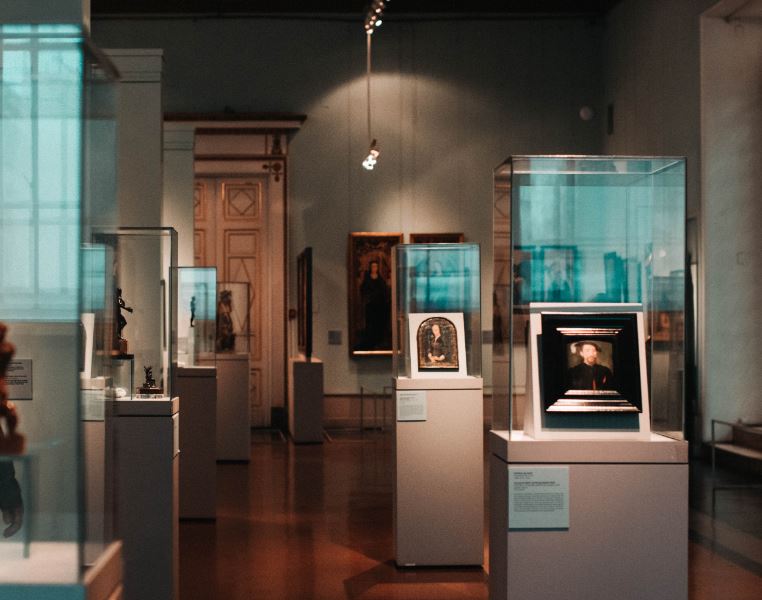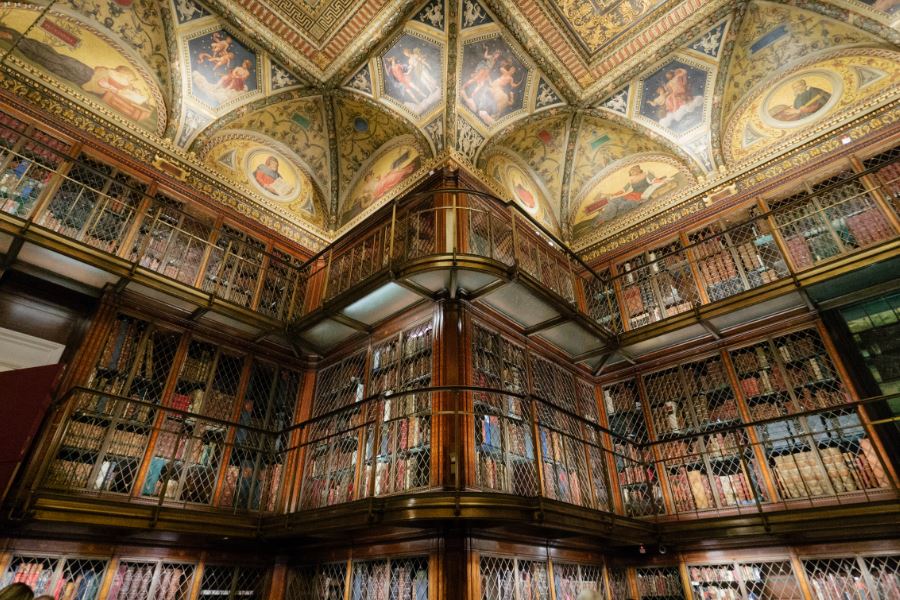One of the top museums in New York City, there is a museum and research library called The Morgan Library & Museum, originally known as the Pierpont Morgan Library. It is located at 225 Madison Avenue, between 36th Street and 37th Street to the south and north, respectively.
The Morgan Library & Museum is made up of several buildings. Charles McKim of the company McKim, Mead, and White created the main structure, and Benjamin Wistar Morris created the annex. The grounds also include the Italianate brownstone home at 231 Madison Avenue from the nineteenth century, which was constructed by Isaac Newton Phelps. Renzo Piano and Beyer Blinder Belle also created the glass entrance building for the museum and library. The residence at 231 Madison Avenue is a New York City landmark, and the main structure and its interior are both declared landmarks by the city of New York.
The area once housed homes belonging to the Phelps family, including one that banker J. In 1880, P. Morgan made the purchase. To house Morgan’s private library, which contained manuscripts and printed volumes in addition to his collection of paintings and drawings, the Morgan Library was established in 1906. The main structure cost $1.2 million to build between 1902 and 1906. J. made the library a public institution in 1924. John Pierpont Morgan, Jr., P. Morgan’s son, was by his father’s wishes, and the addition was built in 1928. During the 2006 renovation of the Morgan Library & Museum, a glass entrance building was built.
History
On the east side of Madison Avenue, between 36th Street to the south and 37th Street to the north, four brownstone homes stood where the Morgan Library & Museum is today. The Phelps Stokes/Dodge family members constructed each of the homes around 1852 or 1853. On lots measuring 65 feet 20 meters wide by 157 feet 8 meters deep, three homes were constructed along Madison Avenue, and the fourth home to the east stretched 197.5 feet 60.2 meters between 37th and 36th Streets. Pink brownstone was used in the Italianate architecture of each home.
From north to south on Madison Avenue, the homes belonged to Isaac Newton Phelps, William E. Dodge, and John Jay Phelps, while George D. Phelps held the home on 37th Street. Murray Hill’s immediate neighborhood had not yet grown at the time, but this changed following the American Civil War.
Helen, a daughter of Isaac Newton Phelps, wed Anson Phelps Stokes in 1865. Two years later, in the Isaac Newton Phelps home at 231 Madison Avenue, their son, the architect Isaac Newton Phelps Stokes, was born. After her father passed away, Helen Phelps received ownership of the home. According to R’s ideas, she expanded her home by half and built a loft in 1888. Robertson, H.
The Morgan Estate
By 1880, banker John Pierpont Morgan, who was born in Hartford, Connecticut, was hoping to purchase his own home. Murray Hill was where most of his and his wife’s acquaintances and professional contacts resided, therefore he wanted to move there. Morgan was interested in purchasing John Jay Phelps’ home at 219 Madison Avenue, which was up for sale for $225,000 and was located near 36th Street. He bought the home in 1881, and during the next two years, he refurbished it. The Herter Brothers completely refurbished the interior, although the exterior was mostly left alone to blend in with the other homes, owned by the Phelpses and Dodge.
Inspired by his father Junius Spencer Morgan’s collection, Morgan started to accumulate a sizable collection of great art during this time. To avoid import duties, the painting was kept in his English home. J. On the advice of his nephew Junius, P. Morgan also started gathering rare books and other bindings. Since books were exempt from import duties, they were kept in the basement of his New York home. Morgan rose to prominence as a financier in the United States throughout the ensuing years. After his father’s passing in 1890, J. P. Morgan’s collection quickly grew. While some of Morgan’s collection was kept in his home’s basement, other pieces were either lent out or put in storage.
The plots to the north and east of J. After Melissa Stokes Dodge, who resided in the Dodge mansion to the north of P. Morgan’s home, passed away, P. Morgan’s home became available for purchase. In 1900, Morgan purchased a 75-foot-wide, 23-meter-long plot to the east of his home. Two years later, he bought two adjacent lots with a combined frontage of 50 feet, 15 meters. For Morgan’s daughter, Louisa and her husband Herbert Satterlee, McKim, Mead & White created a six-story home at 33 East 36th Street on the extreme eastern portion of that property. In contrast to the brownstones on Madison Avenue, the Satterlees’ home was fashioned of limestone. It has tunnels leading to Morgan’s house.
In April 1903, Morgan purchased William E. Dodge’s house. The couple moved into the Dodge mansion while the Satterlee home was being built; later, it was demolished and rebuilt with a Beatrix Farrand-designed garden. For his son J, Morgan had also acquired the previous Isaac Newton Stokes residence at 229 Madison Avenue by December 1904. P. Morgan, Jr., also referred to as Jack. In 1905, when Jack Morgan and his wife Jane were finally able to move into 229 Madison Avenue, he ordered a significant interior restoration and changed the building’s number to 231 Madison Avenue. The outside of the house received $1,900 in improvements from Jack Morgan. J. By 1907, P. Morgan owned the entire 197.5-foot (60.2-meter) frontage on Madison Avenue, as well as the 300-foot-91-meter frontage on 36th Street and the 167-foot-51-meter frontage on 37th Street.
More About the Morgan Library and Museum
The Morgan will finish the library’s first thorough exterior renovation that J. Charles Follen McKim, an architect, was hired by Pierpont Morgan. The Morgan is making site improvements to be able to guide your next visit to one of the best art museums and in conjunction with the restoration to allow access to the grounds for the first time in the institution’s existence.
The Morgan Garden, created by renowned landscape architect Todd Longstaffe-Gowan, will produce a brand-new, attractive location for socializing, unwinding, and museum programming. The addition of periwinkle beds on either side of the Library’s loggia and vibrant, low-height herbaceous beds are part of the garden’s design. From the contemporary pavilion next to the Library, a wide grassy lawn extends, enclosing both that building and the Annex. The Library’s Renaissance-inspired floors are used as a model for the bluestone paths, and cobbled stonework provides visual and textural richness. Several ancient artifacts from the Morgan collection that were previously beyond limits to the public will also be on show in the garden.
The building’s visibility at night will be improved by new lighting. A plan created by Linnaea Tillett Lighting Design Associates calls for relighting the antique lantern in the Library’s loggia. The Library and garden will get soft moonlight thanks to Tillett’s design, which will also draw attention to the building’s and the landscape’s unique qualities.


